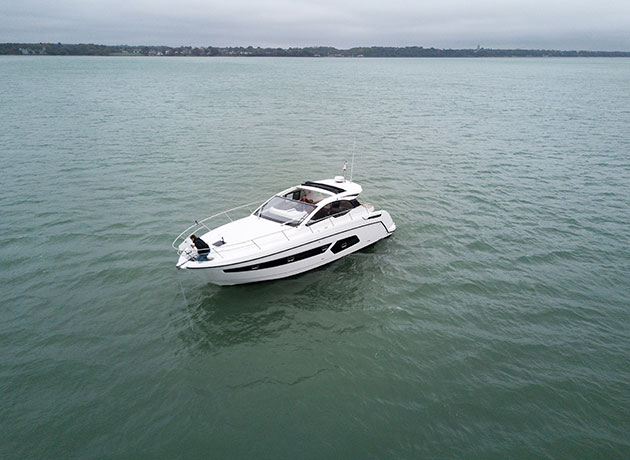One of the most daunting manoeuvres a motorboater can face – learn the best way to deal with leaving a berth in a crosswind
Trying to leave a berth in a controlled manner with a stiff crosswind can be daunting – especially if it’s a tight berth and your neighbour’s boat is shinier and more expensive than yours!
If the wind is pinning your boat against the pontoon, it makes it hard to leave before you get pushed back on. Conversely, if the wind is blowing you off, the issue is how to escape before you get blown into your neighbour.
Positivity is the key to avoid a fender-bashing session but don’t confuse positivity with speed. Crew play a big part as well, and setting the boat up with easy-to-slip lines so they can remove them and bring them inboard exactly when asked really helps to keep things under control.
As always, the first step is to assess what the wind and tide are doing. I like to think of this as ‘look up’ (at the wind) and ‘look down’ (at the tide) – remember that you need the wind information for the surface of the water, not just the wind at yacht top and flag level.
If being blown on, the boat won’t move much whilst the lines are removed but try to arrange your lines so that the last one can be released from on board. If you’re berthed stern in, the first step is to get the bow away from the pontoon.

VIDEO: How to – Helm downwind
In this episode, we guide you through how best to trim your boat if you are having to helm downwind

VIDEO: How to use a lock
In this instalment we demonstrate the best techniques to use when entering and exiting a lock basin
This can be with the bow thruster (if fitted) or a stern spring to force it out. Once the bow is out, select ahead with the outside engine to move the stern away from the pontoon, then alternate engines or use both ahead whilst steering out of the berth.
If moored bow in, then ease the stern away with the inside engine in astern, then as it moves out, use both engines astern to back out positively. If it’s really windy, you may need to use the outside engine ahead and the inside engine astern while stationary against the pontoon to help twist the stern out.
If being blown off the berth, you need the same positivity because the moment you remove the bowline, the bow will start to blow away. You may be able to control this with a bow thruster but if in doubt, use a slip bowline and pull against it with an engine astern, or use a short sternline and drive ahead against it.
This forces the boat on to the pontoon until you’re ready. To do this effectively, you need to rig the lines on short simple slips so when you go into neutral, the boat will lift off the pontoon, allowing the lines to be pulled smartly in while you drive positively out.






















